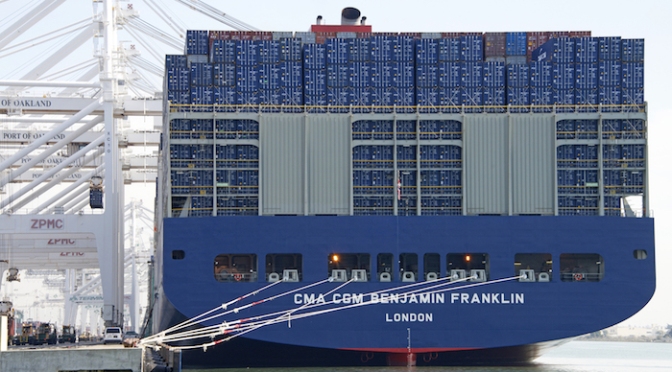Forwarders are reporting a growing number of enquiries for zero freight rates on container shipments from Asia to North Europe, even as spot rates on the trade and on Asia-Mediterranean this week matched the lowest levels ever recorded.
Asia-Europe rates hit $205 per TEU, a level it fell to on June 19, and spot rates to the Med dropped to $195 per 20-foot container, the level it hit on Oct. 16 last year, according to the the Shanghai Containerized Freight Index.
Even though March is the slack season, the year-over-year comparisons are ugly. Asia-North Europe is almost 70 percent down on the same week last year, and Asia-Med is down 76 percent. The comparisons can be found on JOC.com‘s Market Data Hub, along with rates and volumes from all major east-west trades.
JOC.com contacted several forwarders, carriers and shippers about the zero freight reports and no one was prepared to go on the record because of the sensitivities around talking freight prices. However, there was widespread concern about falling rates.
A forwarder with offices in Hong Kong and China said two customers shipping about 100 containers a year to Europe out of three cities in the mainland said they had received a quote for zero freight and wanted him to match it.
“It is absolutely ridiculous. I still don’t know if a carrier actually offered this rate, but if zero freight gets into the market, that would be a disaster,” he said.
The head of ocean freight for a top 10 global logistics provider confirmed the trend of customers asking about zero rates and he warned the market was currently so unstable it was heading for a meltdown.
“Something dramatic is going to happen. The question is not if, but when, and it will hit everyone like a ton of bricks with service disruptions as carriers merge or go out of business,” the Shanghai-based logistics executive said.
The Asia-Pacific head of a European forwarder said he was seeing requests for spot and long term rates of between $50 and $100 per container. “We are not taking up this business, but today average rates offered by shipping lines are around $75-100 per TEU and 150 per 40-foot container,” he said.
“We have no intention to go below cost and we still sell with a profit in most cases, but indeed the margins are very much under pressure.” The forwarder said it was clear from meetings with carriers that they are ready to do whatever it takes to raise rates. “They cannot survive at today’s levels.”
With carrier profitability at such precarious levels, he said bankruptcies were becoming a very real possibility. “Imagine what happens to a sailing schedule if one of your alliance partners suddenly becomes insolvent. Looking the situation today, there is a real possibility of this happening. It is not a desirable situation for anyone,” he said.
For forwarders to quote zero freight rates, it would have to either be offered by container shipping lines, or the rate would be low enough to enable forwarders to offer zero freight and recover the difference through excessive haulage and delivery charges. However, it is worth bearing in mind that in China, the Ministry of Transport forbids the offering of freight rates of below $50 per TEU, with the Shanghai Shipping Exchange monitoring tarrifs and deals on behalf of the MOT.
The three major container carriers contacted by JOC.com said they had no hard evidence of lines offering rates at such give-away levels. An executive from an Asian shipping line said there were rumors in the market that zero freight was being quoted, but he said such a trend, if real, would not be sustainable and would result in problems for the shipping industry.
“Carriers would be better off laying up ships and shippers would not be in a position to maintain a smooth operation in their supply chain,” he said.
Another carrier executive agreed that rate levels have now reached the point where laying up vessels has become financially attractive. “It is getting quite ugly, but as long as we have carriers going for market share and others are subsidized by their governments, things will not necessarily improve,” he said.
The continued operation of loss-making carriers was also questioned by a major Asia-North Europe shipper, who pointed to new rumors of debt-wracked Hyundai Merchant Marine being merged with loss-making Hanjin Shipping.
“I just don’t understand the reasoning behind that. Why merge a loss with a loss in the hope that it becomes a positive?” he said, expressing frustration with the extreme volatility that has consumed the market in the past two years.
“We contract 70 percent of our cargo for the year and every week the rate drops. That means me, and everyone else in the business, has to continually explain our position and defend the contracts. These days we don’t even know where the vessel will be next week — it could be idled, or cancelled, or even scrapped.”
Contact Greg Knowler at greg.knowler@ihs.com and follow him on Twitter: @greg_knowler.












